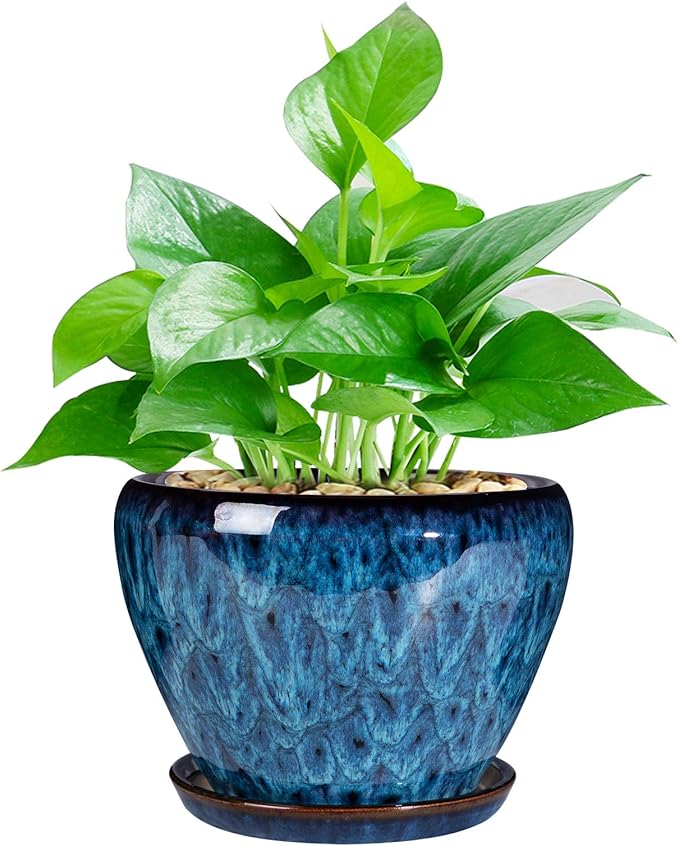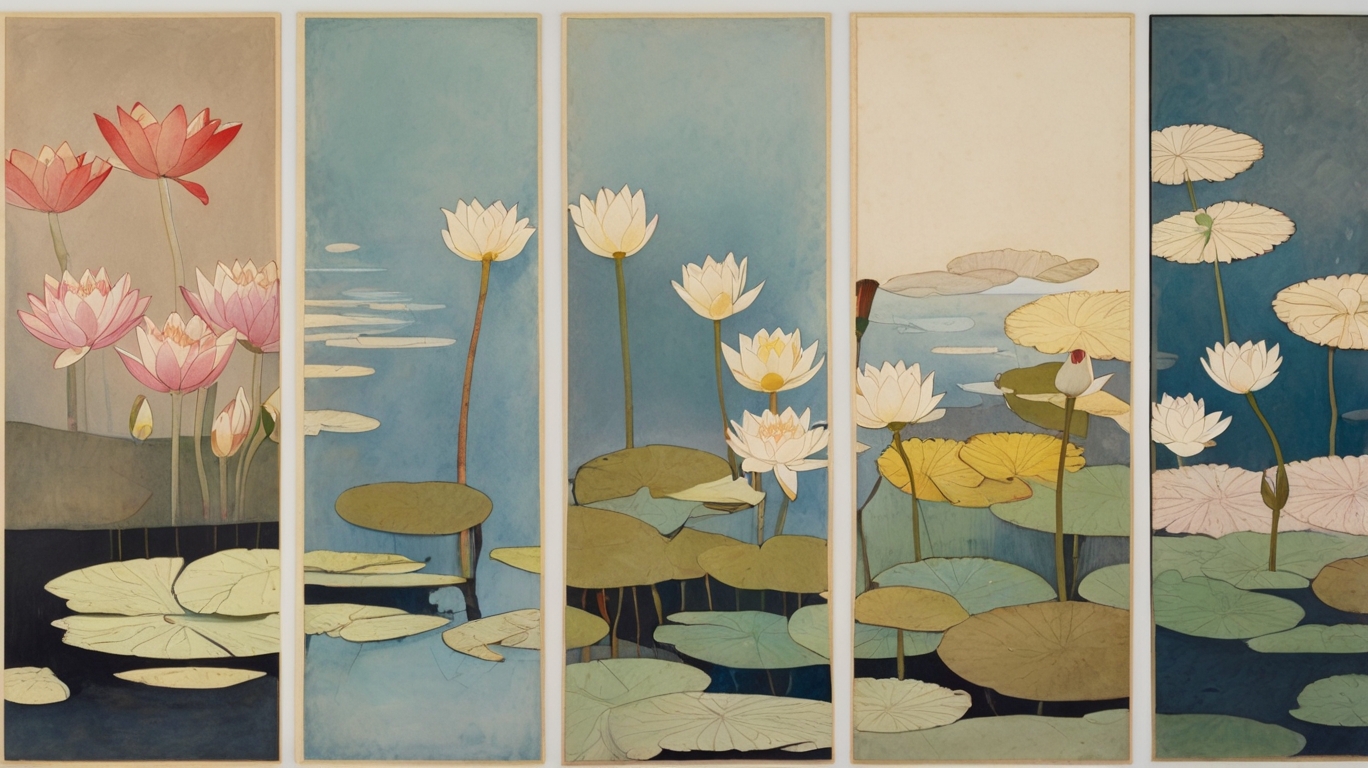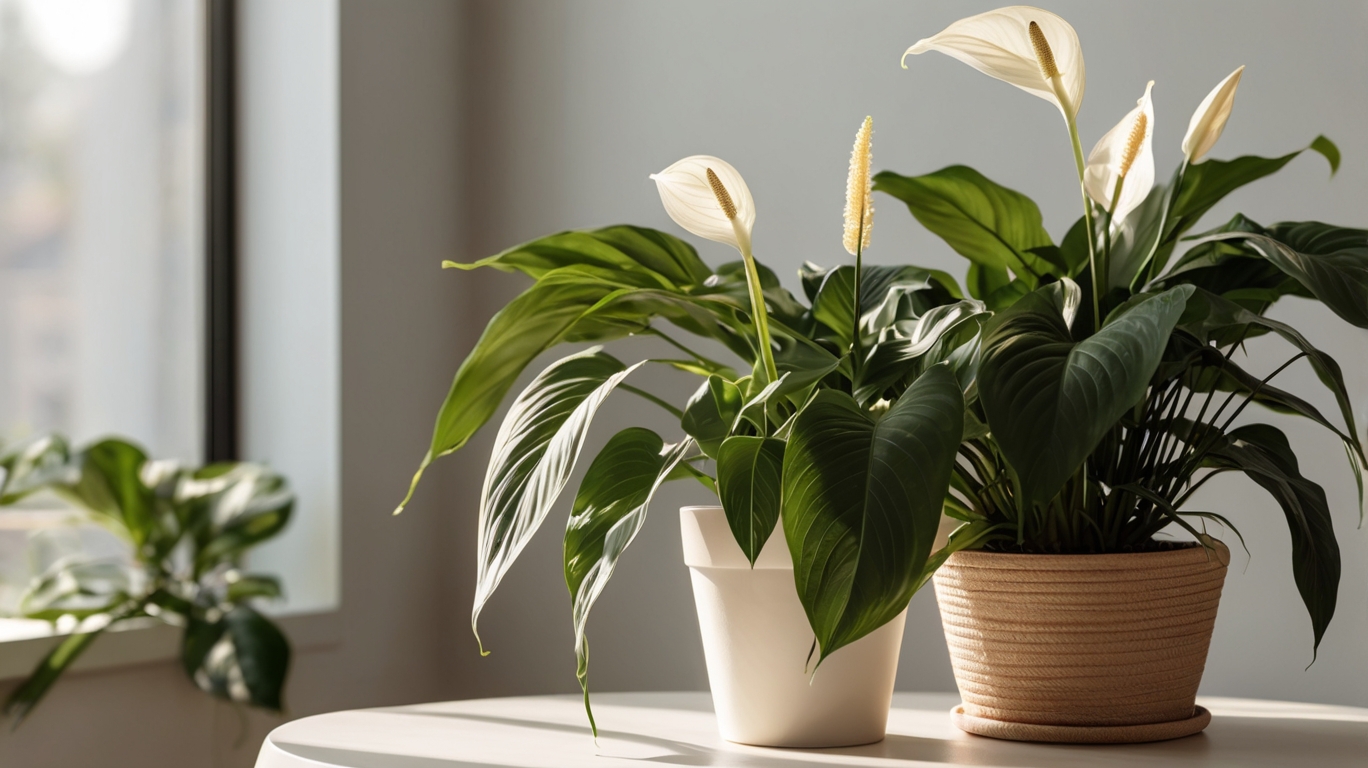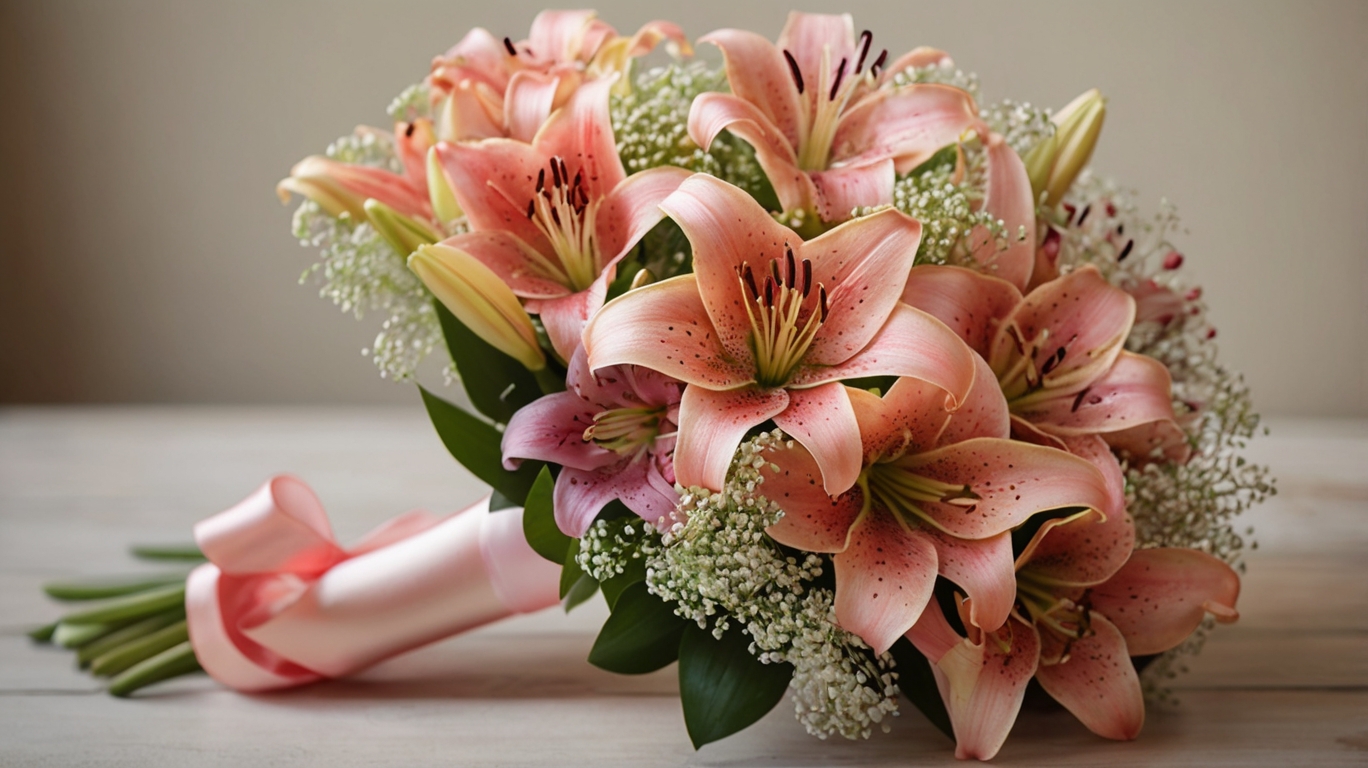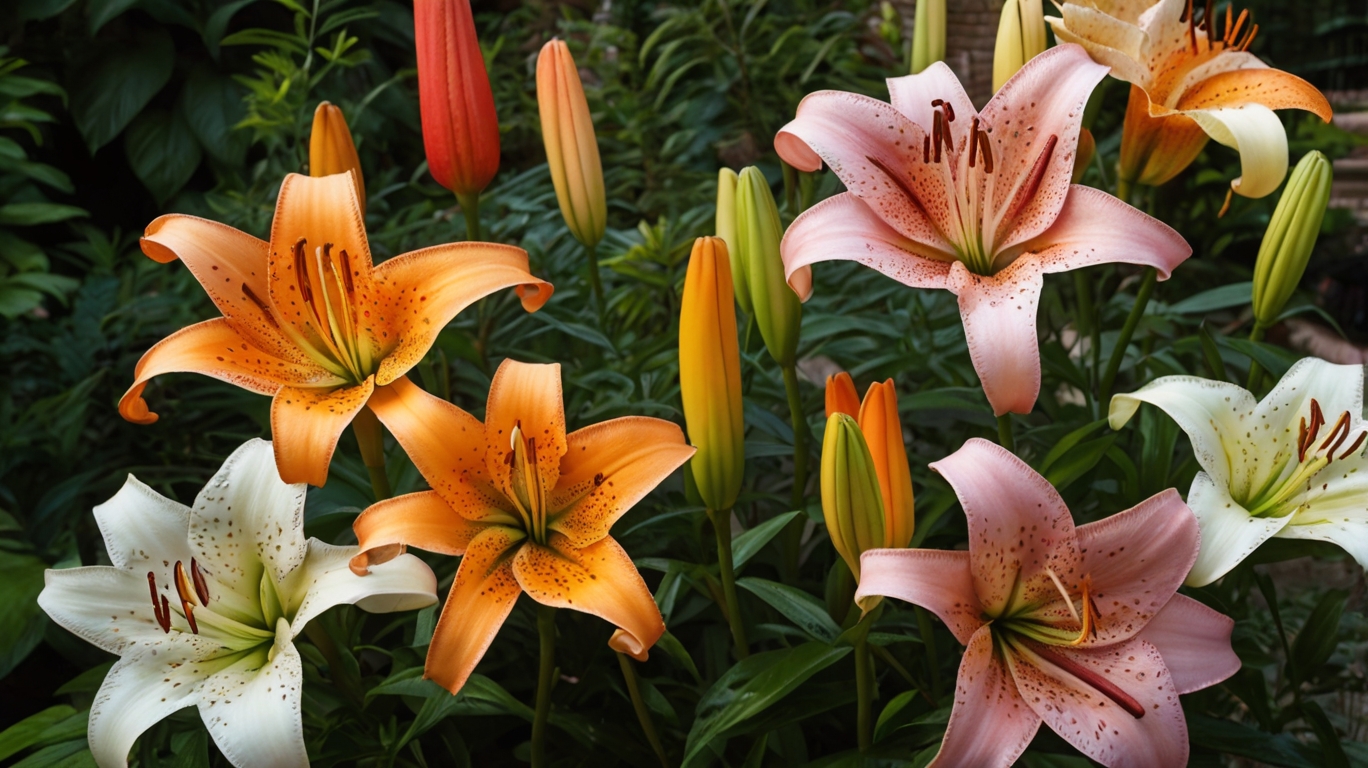What Does a Lily Flower Symbolize? 1 Meanings Across Cultures and History
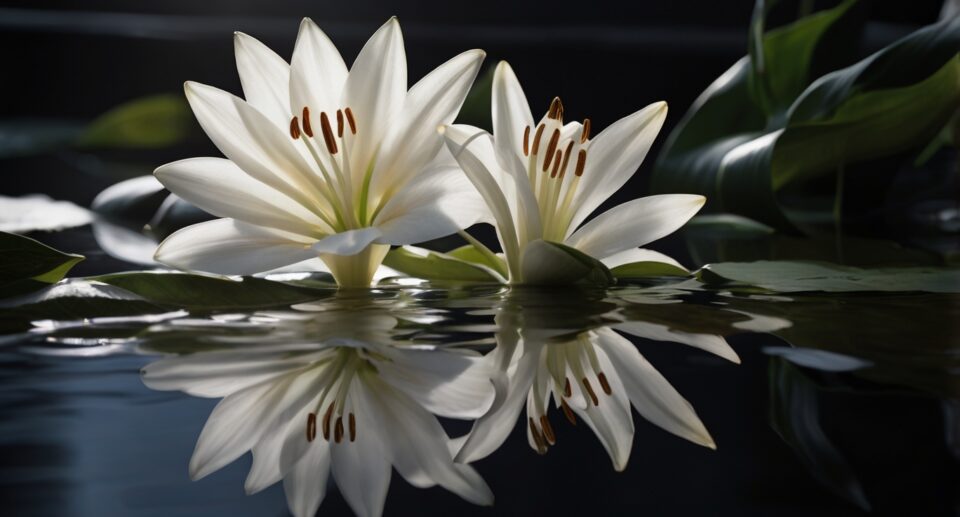
Flowers have long been used by people to express feelings and ideas without needing to say a word. They carry deep meanings tied to human emotions, spiritual beliefs, and cultural traditions. Among all flowers, the lily holds a special place. It’s not just admired for its beauty but also for the strong symbolic messages it carries.
So, what does a lily flower symbolize? The answer isn’t simple because lilies have many meanings depending on the context. They’re used in religious ceremonies, given as part of romantic gestures, and placed at funerals—each time conveying something powerful. Across different settings, lilies can represent purity, renewal or rebirth, deep love, sadness, and hope.
The meaning also changes with the color of the lily—white, pink, yellow, and others each carry their own symbolic weight. What’s fascinating is that the symbolism of lilies isn’t fixed; it changes from culture to culture and continues to evolve today.
This guide dives deep into all these meanings. It covers the history of the lily flower, what it has meant spiritually over time, how different cultures interpret it, and how it’s still meaningful in our modern lives—from weddings and art to healing and remembrance.
Introduction: Why Lily Symbolism Matters
Flowers aren’t just visually pleasing—they have the power to express deep feelings and messages that might be difficult to put into words. Throughout history, people have used flowers to convey emotions like love, sorrow, hope, and admiration. Among all the flowers used for this purpose, lilies have remained especially meaningful over time.
Lilies have appeared in a wide range of important settings—from ancient myths and religious scriptures to modern weddings and funerals. This long-standing presence shows just how deeply symbolic the lily has become across cultures and generations.
When you understand what a lily flower symbolizes, you begin to see beyond its beauty. Each time you include lilies in a bouquet or give them as a gift, you’re not just offering a flower—you’re sending a message. That message might be one of purity, love, sympathy, or new beginnings, depending on the context. Knowing the symbolism behind lilies helps you make more thoughtful and meaningful choices when it comes to floral arrangements.
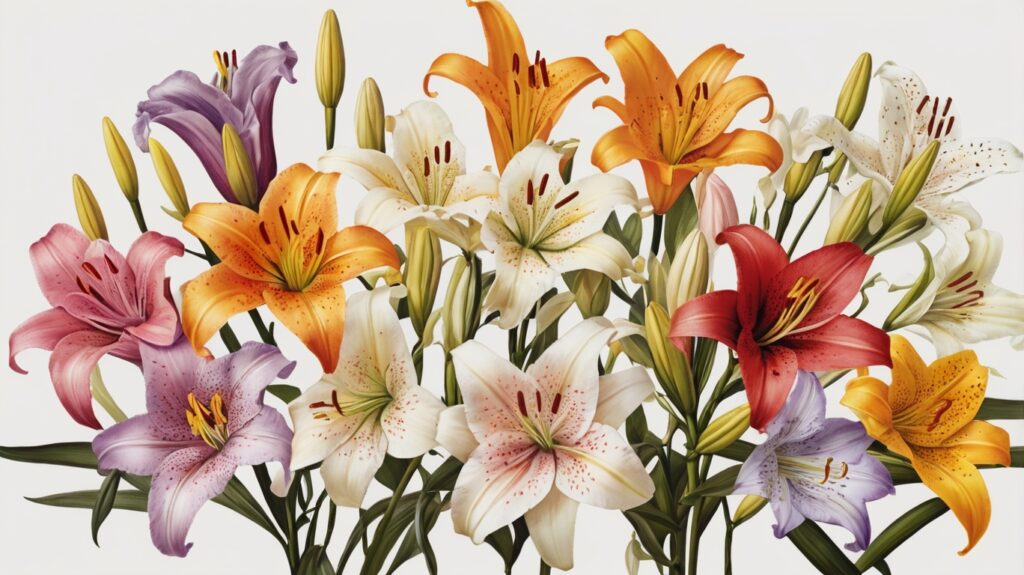
The Etymology and Origin of Lilies
The word “lily” comes from the Latin term lilium, but its history goes back even further. It’s believed that the name has roots in the Greek word leirion and possibly even in ancient Egyptian language and culture. This shows how ancient and widespread the appreciation for lilies has been.
Lilies naturally grow in temperate areas—regions that are not too hot or too cold—mainly found in the Northern Hemisphere. That includes places like Europe, Asia, and parts of North America. People have been growing and cherishing lilies for more than 3,000 years, which highlights just how important and enduring these flowers are.
Throughout history, many powerful civilizations held lilies in high regard. The Greeks, Romans, Chinese, and Egyptians didn’t just admire lilies for their beauty—they gave them deep symbolic meaning. To them, lilies represented things like divine beauty, spiritual renewal, and femininity. In other words, lilies were seen as not only beautiful but sacred and meaningful—often linked to goddesses, motherhood, and rebirth.
What Does a Lily Flower Symbolize in General?
The lily flower carries a rich variety of symbolic meanings, many of which are deeply emotional and spiritual. These meanings have developed over centuries and continue to resonate today in many different cultures and situations. Below are the five core symbolic meanings most commonly associated with lilies:
1. Purity and Innocence
One of the most widely recognized meanings of the lily—especially the white lily—is purity. This is why white lilies are a traditional choice for weddings, symbolizing the pure love and innocence between two people beginning a life together. They are also common in religious ceremonies, representing spiritual purity and moral virtue.
In many Christian traditions, the Virgin Mary is often depicted with white lilies, further emphasizing their connection to chastity and holiness.
2. Fertility and Motherhood
In Greek mythology, lilies were closely tied to Hera, the queen of the gods. According to legend, the first lilies sprang from drops of Hera’s breast milk, giving the flower powerful associations with fertility, motherhood, and feminine nurturing.
Because of this origin story, lilies became symbols of new life, maternal care, and the miracle of creation, often gifted to expectant mothers or used in celebrations of birth.
3. Renewal and Rebirth
Lilies bloom with striking beauty each spring, making them natural symbols of renewal and new beginnings. Their annual return after winter mirrors the cycle of life, death, and rebirth.
In Christianity, this symbolism is especially strong during Easter, when lilies are used to represent the resurrection of Jesus Christ. In this context, lilies remind believers of hope after hardship and the promise of eternal life.
4. Grief and Mourning
Despite their positive associations, lilies also hold meaning in times of sorrow. They are commonly seen at funerals and memorial services, where they symbolize the restored innocence of the soul of the departed.
Their peaceful, pure appearance offers comfort during mourning, serving as a visual reminder that the spirit has found peace and is free from earthly pain.
5. Hope and Enlightenment
In Buddhist and Eastern traditions, lilies are seen as symbols of spiritual enlightenment and awakening. Just as the flower emerges from the earth in full bloom, so too does the enlightened soul rise from worldly ignorance.
Lilies in this context represent hope, transformation, and clarity, making them powerful spiritual icons and meaningful offerings at temples or meditative spaces.
Color Symbolism: What Each Lily Color Means
Each lily color offers a unique variation on the overall symbolic themes:
| Lily Color | Symbolic Meaning |
|---|---|
| White | Purity, virtue, and innocence |
| Pink | Admiration, compassion, and femininity |
| Yellow | Gratitude, joy, and friendship |
| Orange | Confidence, passion, and honor |
| Red | Romantic love and desire |
| Purple | Mystery, royalty, and transformation |
Religious Symbolism of Lilies
Religious and spiritual traditions around the world have long embraced the lily flower for its deep symbolic meanings. From sacred rituals to spiritual metaphors, lilies represent core values such as purity, enlightenment, and divine femininity. Here’s how lilies hold significance in three major religious or mythological traditions:
Christianity
In Christianity, the white lily—often referred to as the Madonna Lily—is one of the most sacred floral symbols. It is closely associated with the Virgin Mary, symbolizing her purity, innocence, and grace. You’ll often see lilies in Christian art, especially in depictions of the Annunciation, where the Archangel Gabriel presents Mary with a lily as a symbol of her divine role.
Lilies also hold strong meaning during Easter, representing the resurrection of Jesus Christ. Their bloom in spring and white petals make them a symbol of new life, spiritual rebirth, and the promise of eternal salvation. Churches are often adorned with white lilies during Easter celebrations to reflect the joyous return of life and hope.
Buddhism
In Buddhist traditions, lilies are associated with spiritual awakening and enlightenment. Their symbolism is somewhat similar to that of the lotus, another revered flower in Buddhism.
Lilies represent the soul’s journey toward clarity and inner peace. As the flower rises from the soil and blooms in the sunlight, it mirrors the Buddhist path of rising from suffering into enlightenment. This symbolism makes lilies suitable offerings in temples and a part of spiritual decor, especially during meditation or remembrance ceremonies.
They also emphasize the idea of rebirth and the cyclical nature of life, aligning with Buddhist teachings on reincarnation and karma.
Ancient Greek Religion
In Ancient Greek mythology, lilies were considered sacred to Hera, the queen of the gods and goddess of marriage and childbirth. According to one myth, lilies first appeared when drops of Hera’s breast milk fell to Earth, giving the flower strong ties to motherhood, fertility, and divine femininity.
Because of this origin, lilies were often used in rituals or artistic representations related to womanhood, creation, and the power of the maternal figure. They were believed to bless families with fertility and protect women during childbirth, making them powerful symbols in both religious and domestic life.

Lily Symbolism in Different Cultures
Beyond religious significance, lilies have held powerful meanings in various world cultures, each adding layers to their symbolic richness. Let’s explore how lilies have been interpreted through the lens of mythology, tradition, and art in different societies:
Greek Culture
In Ancient Greek culture, lilies were more than just beautiful blooms—they were believed to be divinely inspired. As mentioned earlier, the flower was linked to Hera, the goddess of marriage and motherhood, because of the myth that lilies sprang from her milk.
But lilies were also connected to Aphrodite, the goddess of love and beauty. In one version of the myth, Aphrodite was said to be so jealous of the lily’s perfection that she gave it a pistil to make it less flawless. This dual connection made lilies powerful symbols of both fertility and sensual love, a rare combination that reflected the complexities of womanhood in ancient Greek society.
Roman Culture
The Romans adopted much of the Greek symbolism and added their own. To the Romans, lilies were sacred and often used in religious ceremonies, especially those tied to springtime festivals celebrating rebirth, renewal, and abundance.
Lilies were commonly woven into crowns and garlands worn by brides during weddings, symbolizing prosperity and a fruitful union. They were also planted in sacred gardens and featured in artworks as emblems of youth and rejuvenation.
Chinese Culture
In Chinese tradition, the lily holds a particularly romantic and auspicious meaning. The pronunciation of “lily” (bǎi hé, 百合) sounds similar to the phrase that means “a union that lasts 100 years,” making it a favorite flower in wedding ceremonies.
Lilies are often included in wedding bouquets, decor, and gifts, symbolizing a long, harmonious marriage and many children. They are also used during the Chinese New Year as symbols of good luck, abundance, and family unity.
Victorian England
During the Victorian era, flowers became a sophisticated form of non-verbal communication known as “floriography”. People used flowers to express thoughts and feelings that were not spoken aloud, especially in matters of love and courtship.
Lilies in this era symbolized purity, nobility, and high virtue. A bouquet of lilies sent a message of refined beauty and moral character. The white lily, in particular, was favored by those wishing to convey deep admiration and respect, making it suitable for both romantic and formal social contexts.
Lilies in Art, Literature, and Mythology
The lily flower has left a lasting impression not only in religion and culture but also in the world of artistic expression. Over centuries, it has served as a visual and literary symbol of some of humanity’s most profound themes—purity, beauty, divinity, and transience.
Renaissance Art
During the Renaissance, a period deeply rooted in Christian ideals and symbolism, the lily emerged as one of the most powerful visual motifs. Most notably, white lilies were frequently used to represent the Virgin Mary’s purity, innocence, and divine grace.
One of the most iconic examples is Leonardo da Vinci’s “Annunciation”, where the Archangel Gabriel holds a lily as he appears before Mary. The flower, positioned between them, is not just a decorative element—it’s a sacred symbol announcing that Mary has been chosen by God and that she remains untouched by sin. The lily here becomes a visual bridge between the human and the divine.
Literature and Poetry
In poetry and literature, lilies often take on a more metaphorical role. They are used to symbolize:
-
Fleeting beauty – representing the temporary nature of youth and physical appearance
-
Fragile innocence – evoking the delicate and untouched state of the soul
-
Tragic love – appearing in elegies and love poems as a mark of loss or unattainable affection
For example, in Victorian poetry, lilies were frequently used to express the sorrow of lost innocence or the bittersweet beauty of a short-lived romance. The flower’s soft, pale appearance made it an ideal symbol for ethereal, delicate emotions.
Mythological Origins
In mythology, the origin of the lily is often divine. Various legends describe lilies as being born from goddesses’ milk, tears of the earth, or even as gifts from the gods. These stories enhance the flower’s association with heavenly purity and sacred femininity.
In Greek mythology, as mentioned earlier, lilies are linked to Hera, whose breast milk gave birth to the flower. In other traditions, the lily is said to have sprung from the tears of Eve as she left the Garden of Eden, adding a layer of spiritual sorrow and redemption.
Symbolism Across Mediums
No matter the form—painting, poetry, or myth—the lily consistently appears as a symbol that goes beyond beauty. Its presence often signals something sacred, emotional, or deeply philosophical. Artists, writers, and storytellers have long used the lily to reflect the human condition, elevating the flower to a level of artistic immortality.
Lily Symbolism in Modern Life
Even in today’s fast-paced world, the lily flower continues to hold deep symbolic significance. Whether used in celebrations, rituals, or personal expression, lilies remain a timeless symbol of some of life’s most meaningful themes—love, loss, renewal, and peace.
Here’s how lilies are used and interpreted in modern contexts:
In Weddings
Lilies—especially white lilies—are a classic flower choice for weddings. They symbolize:
-
Pure and faithful love
-
Commitment and integrity in marriage
-
The beginning of a new chapter filled with hope and trust
Their clean, elegant appearance adds both sophistication and symbolic depth to wedding bouquets, altar arrangements, and centerpieces. In many cultures, including Western and Eastern traditions, lilies are seen as blessings for a harmonious union.
In Funerals
At the other end of life’s spectrum, lilies are often present at funerals and memorial services. Their meaning in this context is profound:
-
Restored innocence of the departed soul
-
Peace, purity, and spiritual transition
-
Comfort for the grieving family
The symbolism is particularly strong for white lilies, which convey the idea that the soul of the deceased has returned to a state of grace and purity. Their presence brings a sense of serenity and reverence during emotional farewells.
In Interior Design
Lilies aren’t just for ceremonies—they’re also a popular choice in interior design, thanks to both their beauty and their symbolism.
-
Used to evoke calm and emotional balance
-
Believed to cleanse spiritual energy and promote inner peace
-
Often chosen for minimalist, tranquil spaces such as spas, meditation rooms, or modern homes
Their fragrance and form help create a peaceful, uplifting atmosphere, making them ideal for those looking to add both aesthetic appeal and symbolic meaning to their living spaces.
In Tattoos
Lilies are also a powerful motif in the world of body art. They’re commonly chosen for tattoos that represent:
-
Personal transformation or rebirth
-
Grief and remembrance for a lost loved one
-
Feminine strength, purity, and resilience
The flexibility of lily tattoos—combined with their layered meanings—makes them a deeply personal choice. Whether stylized or realistic, a lily tattoo often reflects an individual’s journey, beliefs, or tributes to someone important.
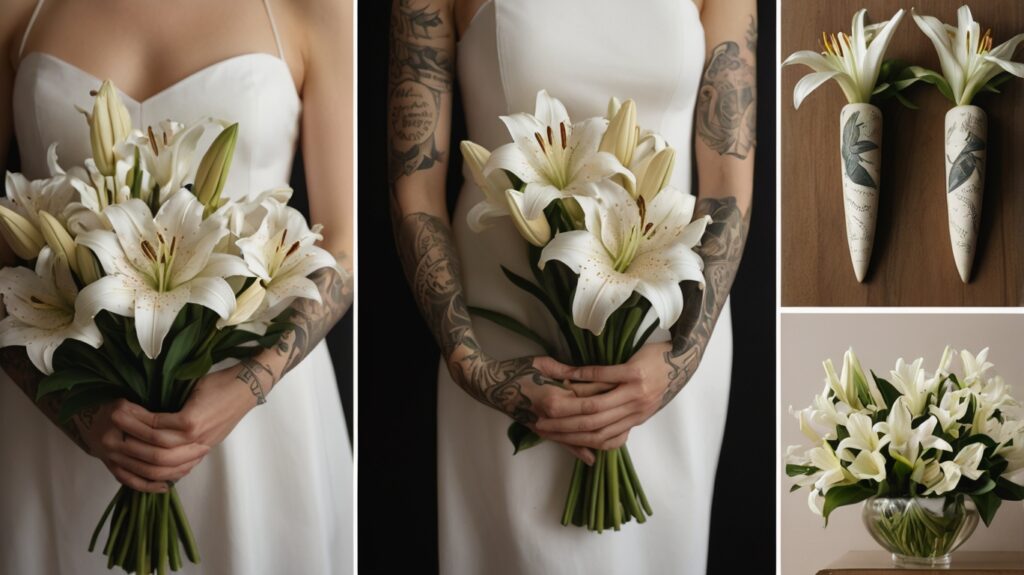
How to Use Lilies to Convey Symbolic Messages
When you give or display lilies, consider their symbolic power:
Occasions to Use Lilies:
-
Weddings: White or pink lilies
-
Funerals: White or stargazer lilies
-
Anniversaries: Yellow or red lilies
-
Birthdays: Orange or mixed lilies
-
Apologies: Pink lilies for compassion and understanding
Tips for Meaningful Gifting:
-
Match the color to the sentiment
-
Include a personal note explaining the symbolism
-
Choose seasonal arrangements for authenticity
Conclusion: A Timeless Symbol of Life’s Dualities
So, what does a lily flower symbolize? It is far more than just a pretty bloom. The lily embodies the delicate balance between opposites: life and death, purity and passion, sorrow and celebration. Across centuries of mythology, religion, art, and culture, lilies have remained a poignant symbol of the human experience.
From their sacred role in Christian and Buddhist traditions, to their presence in Greek myths, Chinese weddings, and Victorian poetry, lilies are universally recognized as emblems of emotional depth, spiritual truth, and symbolic beauty.
Their meanings are layered and evolving, but always emotionally resonant. Whether you’re:
-
Honoring a loved one at a funeral
-
Celebrating purity and commitment at a wedding
-
Seeking peace through spiritual practices
-
Expressing personal growth through a tattoo
—the lily flower speaks a language the heart instinctively understands.
So the next time you see a lily, you’ll know: it’s not just a flower. It’s a symbol of life’s most profound truths, beautifully captured in bloom.
FAQs About Lily Flower Symbolism
Q: What does a white lily flower symbolize?
A: White lilies symbolize purity, innocence, and spiritual renewal.
Q: Are lilies only used in funerals?
A: No. While lilies are common in funerals, they are also used in weddings, birthdays, and other celebratory occasions.
Q: Can lily symbolism differ between cultures?
A: Yes. For instance, in Chinese culture, lilies represent 100 years of love, while in Christian traditions, they symbolize resurrection.
Q: What’s the most romantic color of lily?
A: Pink and red lilies are most associated with romance and admiration.
Q: Is it appropriate to gift lilies to someone grieving?
A: Absolutely. Lilies are one of the most traditional and respectful flowers for expressing sympathy and remembrance.
Click the link below to buy “FLOWER Retro Wooden Stand Plant Terrarium with 3 Bulb Glass Vases for Hydroponic Home & Office Décor”
“Click the link below to buy “6-inch modern ceramic planter with glaze, drainage hole, and saucer for indoor & outdoor plants.”
